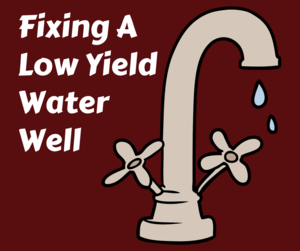CALL TODAY 1-800-441-6281
CALL TODAY 1-800-441-6281

What To Do If My Drinking Water is Contaminated
- Tags:
- water contamination
For many people in New England, their water is perfectly safe to drink. But for some who draw their water from a well, there may be some naturally-occurring contaminants that should be removed. A release issued by the New Hampshire Department of Environmental Services in 2014 warned that up to 80,000 residents in Hillsborough, Rockingham and Strafford counties might have unhealthy levels of one or more toxic metals in their drinking water. This includes contaminants like arsenic and radon which have known adverse health effects.
Because of the potential risk to homeowners, the NHDES recommends testing well water every 3 to 5 years to determine if contaminants are present. If contaminants are found, there are some treatment options available. But remember, knowing which one to choose depends greatly on the kind of contaminant in your water.
Point-of-use vs. Point-of-Entry Water Treatment
Once testing is done to determine the type of contaminant in your water, you must decide if you want to treat the water as it comes into your home or at the point of use. Treating water at the point of entry is often used when other minerals or contaminants are in the water, such as iron, manganese, bacteria or radon. It is also recommended in homes where the water supply has arsenic levels above 250 parts per billion. As a general rule, point-of-entry systems are more expensive than point-of-use systems.
Residential Well Water Treatment Options
There are a variety of different filtration systems that are designed to address various water contamination and quality issues. The following list of filtration systems is the most common for solving domestic water quality problems.
Granulated Activated Carbon filters – This method can be installed at point-of-use or point-of-entry. It works by passing the water through a special carbon filter which removes organic contaminants that cause taste and odor problems, and metals such as lead and copper. Depending on the model and design, these filters can also remove chlorination, byproducts, cleaning solvents and pesticides. Activated carbon filters must be changed out regularly to ensure the system is working properly. It will not remove nitrate, bacteria or dissolved minerals.
Ion exchange system – These systems are also known as water softeners and are most commonly used in point-of-entry systems. Ion exchange removes minerals that cause hard water, particularly calcium and magnesium. Some designs remove radium and barium, and systems that use activated alumina, can also remove fluoride. These are highly-efficient and cost-effective systems, however, they may not be the right fit if a home’s water has oxidized iron or iron bacteria, which clogs the system.
Reverse osmosis system – These systems are often found installed at the point-of-use and can be the right fit for homes that want to filter water for cooking and drinking only. Reverse osmosis systems remove nitrates, sodium, other dissolved inorganic and organic compounds. They also remove foul tastes, smells or colors. Some systems that use a carbon filter can also reduce the level of some pesticides and petrochemicals. Homeowners should know what contaminants are in their water before buying since reverse osmosis filters do not remove all compounds.
Distillation system – These units boil water and collect the resulting water vapor to create distilled water. They are effective in removing nitrates, bacteria, sodium, hardness, dissolved solids, most organic compounds, heavy metals, and radionuclides. Distillation systems do not remove all contaminants, and may not be a good choice for homes that are unoccupied regularly. When these systems are not in use, they can grow bacteria within the cooling coils over time.
If you are interested in learning more about the different kind of filtration systems available, or would like to conduct a water quality test, contact Skillings & Sons for a consultation.

